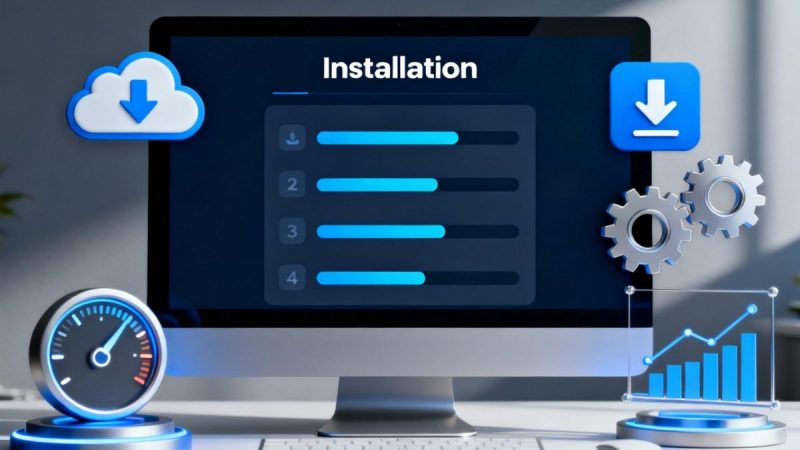Software Product Development: Types and Methodologies

Software Product Development: Types and Methodologies
Software product development is increasingly growing into one of the most important parts in the IT industry. Today, software products are in use in almost all industries, especially on all computer-related processes or applications. With the development of technology and the level of digital transformation in most organizations, it is almost impossible to think of any activity that does not rely on some form of computer-related process.
Consequently, the software product development sector is rapidly growing every year. A report by Gartner, which was released at the end of 2020, indicates that the custom software development industry has hit a staggering $70 billion, and it is expanding at a rate of 5 per cent every year in some particular software development areas. However, you need to follow the right methodologies to enjoy the full benefits of the field of IT.
Here we look at the types of software products and the most common methodologies.
Types of Software Products
Software products can be categorized into 4 major groups. In this article, we will look at how they are used in business and life in general.
1. Programming software products
These software products are also referred to as development tools. Programming software products include text editors, compilers, linkers, debuggers, and much more. These tools are programs or programs that help developers build, debug, and maintain other apps and programs. Thus, these products are designed for developers and programmers who write code.
Programming software products can be considered as translators as they help translate programming languages such as C++, Python, and many others into something that a phone or computer can understand.
2. Application Software Products
Application software is a popular type of software product. These are end-user programs that enable you to achieve the desired results or perform tasks. In this case, the end-user is an individual who is actually performing any tasks using the program or product. Some of the common examples of software products include CRM tools like Hubspot, internet browsers, word processing apps such as Microsoft Word, and photo-editing software such as Lightroom or Adobe.
Application software products are usually installed on mobile devices and computers depending on the user’s need. There are several options available in this category since this is the most common form of a software product. This allows users to choose one that suits their budget, needs, and expectations. For instance, if you want to access the internet, you can use Firefox, Chrome, or Safari.
Other examples of software products that fall under this category include media players, Office productivity suites, and data management software.
3. System Software
System software products manage the resources of mobile devices and computers, which allows you to use these devices seamlessly. These programs make programming much easier. Examples of system software include operating systems, database management systems, translators, networking software, and software utilities. System software is important in the running of the entire computer system or any form of application.
A good example of a software system in use is when your phone or laptop has an update. In this case, there is an upgrade or a tweak on the software product that would allow your phone or computer to keep applications running and also work properly. Some of the common examples of system software include Microsoft Windows and Apple’s iOS.
System software runs in the device’s background, which means that you will never use it directly. Consequently, most people only remember it and its role when it has an update.
4. Driver Software
Driver software is almost similar to system software, which explains why most people regard it as a type of system software. Drivers help control and operate devices plugged into a computer. Driver software enables devices to perform their core functions. A perfect example of devices that use these software products to perform their main functions is your printer.
Remember, when setting up your printer for the first time, you need to install a software product for it to work with your computer. The software product connects your computer and the printer, enabling them to communicate when scanning or printing anything.
Common Software Product Development Methodologies
Every IT expert understands that there are several software product methodologies today, and each of them provides a set of advantages. Some of the advantages include enhanced process efficiency, minimized risk, improved scalability, and continuous iterations. Here we look at the most common methodologies and also discuss how they fit your business needs.
1. Agile
Agile methodologies are the most common model in software product development. These are where releases and new updates of the software are developed and availed to customers after every few weeks. The model allows for more features to be tested and added in every stage of development. It also allows more attributes to be tested again after customers have given their feedback. Consequently, TCGen’s Agile methodologyhelps deliver products that meet the expectations, which saves time and resources that would be used to correct mistakes.
Benefits
- Great quality product
- Offer better control
- Customer satisfaction
- Increased flexibility
- Enhanced team morale as it promotes teamwork
- Allows for continuous improvement
- Reduced risks
- Enhanced project predictability
- Provides more relevant metrics in measuring project performance, cost, and time
2. Waterfall
The waterfall is one of the oldest software product development models. The model has a series of sequential phases that start from conception and end with maintenance. Besides, the Waterfall methodology is ideal for projects with accurate documents and clear commands since it helps the development team achieve well-defined goals. The accurate documents describe the procedure of producing the system.
Benefits
- Allows your team to determine the end goal early
- Uses clear structure
- Excellent transfer of information
- Easy and simple to use and understand
- Works well for smaller projects
- Easier to manage since each stage has particular deliverables and its review process
3. Incremental and Iterative
This methodology combines some of the features of the Agile process and the Waterfall process. It has the flexibility of the Agile process methodologies and upfront planning of the Waterfall process. Both models focus on the idea of developing the software product in bits and sharing them with the customer for their feedback, but they differ on what to build in each release.
Benefits
- Faster delivery of the initial product
- Allow customers to get the necessary functionality early
- Lowers delivery cost
- Every release is an increment to the initial product
- Allows you to create prioritized requirements first
4. Scrum
The model is considered a subset of the Agile model, which works better in managing the development process at a higher (macro) level. Scrum follows the values and principles of Agile methodologies. By considering some practices in software product development, Scrum covers further definition and specification. This model is ideal for products with changing demands.
Benefits
- High quality
- Lower costs
- Faster release of useable software products to customers and users
- Higher productivity
- Better employee morale
- Offers great ability to incorporate emerging changes
- Suitable even for complex projects
- Better user satisfaction
Final Thoughts
Software product development is fast emerging as one of the most important fields in the industry. Today, almost every area of our lives requires software products or related products to run as required. Understanding the main types of software allows you to determine the one that will fit your business needs. Besides, it is also important to learn about the common methodologies in software product development and their advantages.
Thanks & Kind Regards,
Thanh (Bruce) Pham
CEO
Saigon Technology Solutions
Email: thanh.pham@saigontechnology.com
A Member of Forbes Technology Council
Mobile: (+84) 913 666 227
Skype: tienthanh.pham (Thanh Bruce Pham).






